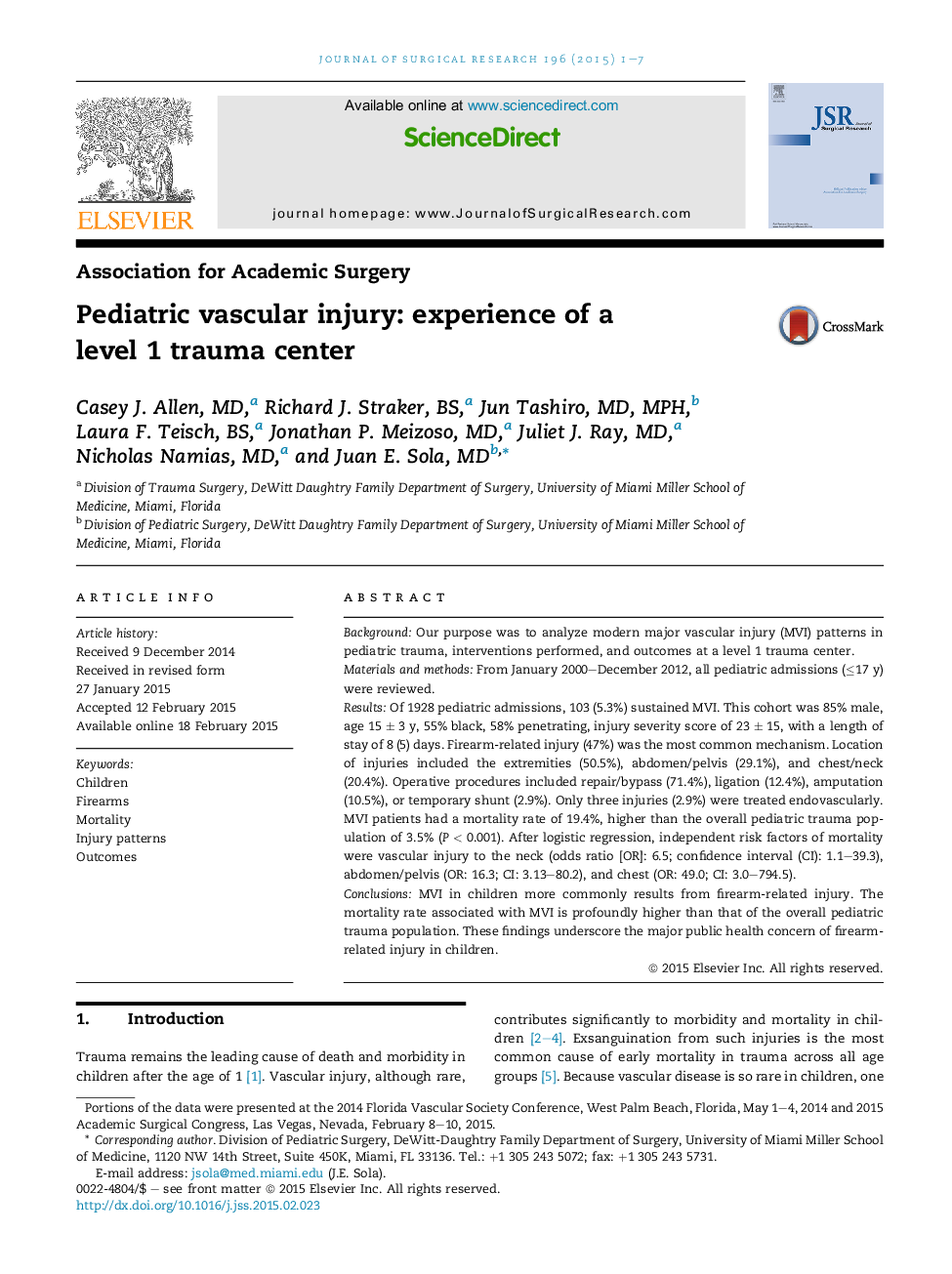| Article ID | Journal | Published Year | Pages | File Type |
|---|---|---|---|---|
| 4299953 | Journal of Surgical Research | 2015 | 7 Pages |
BackgroundOur purpose was to analyze modern major vascular injury (MVI) patterns in pediatric trauma, interventions performed, and outcomes at a level 1 trauma center.Materials and methodsFrom January 2000–December 2012, all pediatric admissions (≤17 y) were reviewed.ResultsOf 1928 pediatric admissions, 103 (5.3%) sustained MVI. This cohort was 85% male, age 15 ± 3 y, 55% black, 58% penetrating, injury severity score of 23 ± 15, with a length of stay of 8 (5) days. Firearm-related injury (47%) was the most common mechanism. Location of injuries included the extremities (50.5%), abdomen/pelvis (29.1%), and chest/neck (20.4%). Operative procedures included repair/bypass (71.4%), ligation (12.4%), amputation (10.5%), or temporary shunt (2.9%). Only three injuries (2.9%) were treated endovascularly. MVI patients had a mortality rate of 19.4%, higher than the overall pediatric trauma population of 3.5% (P < 0.001). After logistic regression, independent risk factors of mortality were vascular injury to the neck (odds ratio [OR]: 6.5; confidence interval (CI): 1.1–39.3), abdomen/pelvis (OR: 16.3; CI: 3.13–80.2), and chest (OR: 49.0; CI: 3.0–794.5).ConclusionsMVI in children more commonly results from firearm-related injury. The mortality rate associated with MVI is profoundly higher than that of the overall pediatric trauma population. These findings underscore the major public health concern of firearm-related injury in children.
